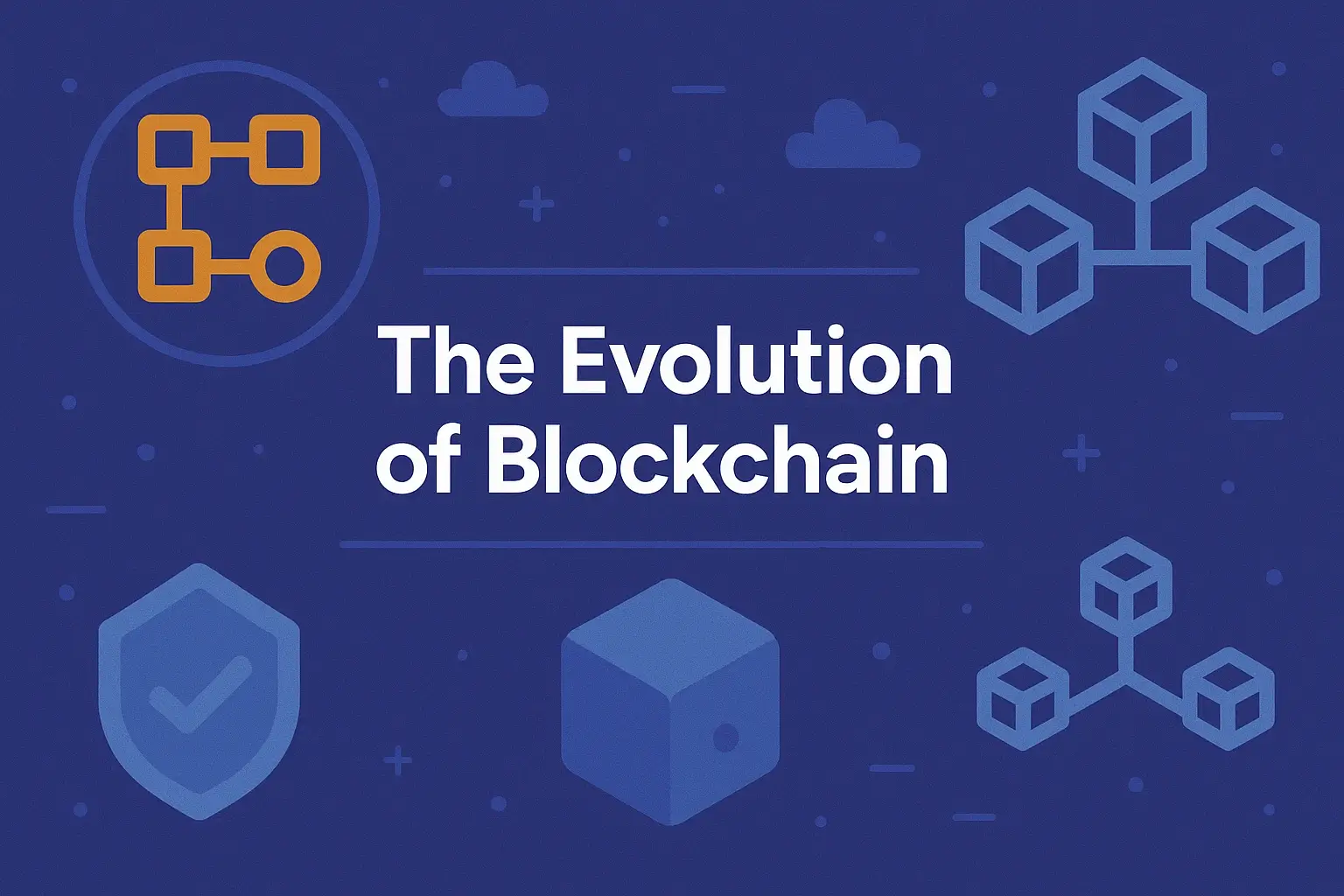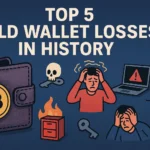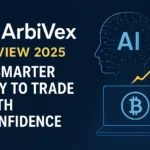Blockchain is often portrayed as a 21st-century innovation, but its roots trace back much further—to the cryptographic breakthroughs during World War II. From Alan Turing’s Enigma codebreaking to Bitcoin’s genesis block, and onward to today’s decentralized finance (DeFi) and post-quantum cryptography, blockchain’s evolution mirrors humanity’s relentless pursuit of trust, security, and digital autonomy.
Cryptographic Origins — From War Machines to Digital Trust
Alan Turing and the Enigma Machine
During World War II, British mathematician Alan Turing played a crucial role in deciphering encrypted Nazi communications via the Enigma machine. This effort laid foundational principles in:
- Pattern recognition
- Secure messaging
- Decentralized computation
While Turing’s work was military-focused, it introduced concepts that would later inspire public-key encryption—core to blockchain security.
The Rise of Cryptography in the 1970s–1990s
The Cold War era catalyzed a second wave of cryptographic progress:
- 1976: Whitfield Diffie and Martin Hellman developed public-key cryptography.
- 1991: Phil Zimmermann released Pretty Good Privacy (PGP), enabling encrypted messaging.
- 1993: The Cypherpunks advocated for anonymous digital finance.
These ideas planted the seeds of decentralized digital currency.
The Bitcoin Genesis: A New Paradigm in Trust
2008–2009: Satoshi Nakamoto’s Breakthrough
In October 2008, Satoshi Nakamoto published the Bitcoin whitepaper. By January 2009, the Genesis Block was mined. Bitcoin offered:
- A trustless, peer-to-peer transaction network
- Proof-of-Work consensus to eliminate double-spending
- A fixed monetary supply (21 million BTC)
This innovation merged Turing’s logic, Diffie-Hellman key exchange, and the Cypherpunk dream into one blockchain-based system.
Why Bitcoin Was Revolutionary
| Feature | Traditional Systems | Bitcoin |
| Trust Mechanism | Central authority | Decentralized consensus |
| Transaction Speed | Hours–days | Minutes |
| Currency Control | Central banks | Algorithmic |
| Privacy | Low | Pseudonymous |
Bitcoin was the first use-case of blockchain that gained real traction.
Ethereum: From Currency to Computation
Launched in 2015 by Vitalik Buterin, Ethereum revolutionized blockchain by introducing smart contracts, enabling:
- Decentralized applications (dApps)
- Tokenization of assets (ERC-20, ERC-721)
- Autonomous protocols (DeFi, DAOs)
Ethereum’s Technological Milestones
- 2015: Ethereum 1.0 launched with PoW.
- 2022: Ethereum switched to PoS (The Merge).
- 2023–2025: Ethereum layer 2s (Optimism, Arbitrum) gained adoption.
Ethereum turned blockchain into an operating system for Web3.
Beyond Ethereum — Multi-Chain and Interoperability Era
Rise of Solana, Polkadot, and Avalanche
As Ethereum faced congestion and high gas fees, competitors emerged:
- Solana: High throughput, PoH consensus.
- Polkadot: Interoperable parachains.
- Avalanche: High-speed consensus and subnet customization.
Each of these introduced unique innovations that addressed Ethereum’s scaling and UX issues.
Interoperability: The Future is Multi-Chain
Projects like Cosmos and LayerZero focus on interoperability, allowing:
- Cross-chain asset transfers
- Unified liquidity pools
- Chain-agnostic smart contracts
This mirrors the Internet’s evolution—multiple interconnected protocols, not one monolith.
Web3, DeFi, NFTs, and the Metaverse
Blockchain as the Digital Backbone
In 2024–2025, blockchain is not just about currency. It powers:
- Web3: User-controlled identity and assets
- DeFi: Banking without intermediaries
- NFTs: Unique digital ownership
- Metaverse: Immersive digital experiences
Real-World Applications
| Use Case | Blockchain Used | Example |
| Real Estate NFTs | Ethereum, Polygon | Propy |
| Game Assets | Solana, ImmutableX | Star Atlas, Gods Unchained |
| Cross-Border DeFi | Polkadot, Cosmos | Acala, Osmosis |
Blockchain is enabling new digital economies.
The Birth of Cryptography: From Enigma to Digital Security
The Enigma Machine and the Foundations of Modern Cryptography
The Enigma machine, developed by the Germans and famously deciphered by British codebreakers led by Alan Turing during World War II, stands as a historical turning point in both the realms of cryptography and computation. It utilized a complex system of rotors and plugboards to create an ever-changing cipher, believed at the time to be unbreakable.
Alan Turing’s theoretical breakthroughs, notably the development of the Turing machine, not only enabled the decryption of Enigma but also laid the groundwork for modern computing. In breaking the Enigma code, Turing and his team had to invent early forms of computers—electromechanical devices capable of trying massive numbers of permutations. This accelerated the field of computer science and indirectly catalyzed the development of secure digital communication, which decades later would become foundational for blockchain.
From Analog to Digital: The Rise of Public-Key Cryptography
In the 1970s, another cryptographic revolution unfolded: the invention of public-key cryptography by Whitfield Diffie and Martin Hellman. This marked the beginning of decentralized trust. For the first time, two parties could communicate securely without having to pre-share a secret key.
Public-key infrastructure (PKI) enabled secure digital signatures, identity verification, and data encryption at scale. These principles would become critical for blockchain’s later success—particularly Bitcoin’s proof-of-work mechanism and the use of private keys to sign transactions.
“The whole point of public key cryptography was to eliminate the need for a trusted third party. That idea is at the heart of blockchain.” — Bruce Schneier, cybersecurity expert
Blockchain 1.0: The Birth of Bitcoin and Distributed Ledgers
Satoshi Nakamoto and the Genesis Block
In 2008, an unknown figure or group under the pseudonym Satoshi Nakamoto released the whitepaper “Bitcoin: A Peer-to-Peer Electronic Cash System.” The timing was no coincidence. The global financial crisis had just exposed the fragility and opacity of centralized banking institutions. Bitcoin offered a radical alternative: a trustless, decentralized, censorship-resistant financial system.
On January 3, 2009, the Genesis Block (Block 0) was mined, hardcoded with the message:
“The Times 03/Jan/2009 Chancellor on brink of second bailout for banks.”
This message wasn’t just a timestamp—it was a manifesto. Bitcoin introduced:
- Decentralized consensus via Proof of Work (PoW)
- Transparent public ledger through blockchain technology
- Digital scarcity through a capped 21 million supply
- Self-sovereign ownership via private keys
Technological Stack of Early Bitcoin
| Component | Role in Bitcoin Ecosystem |
| SHA-256 | Cryptographic hash function securing blocks and addresses |
| Proof-of-Work | Consensus algorithm ensuring network honesty |
| UTXO Model | Transaction mechanism tracking coin ownership |
| P2P Network | Infrastructure for decentralized communication |
Despite its technical elegance, Bitcoin’s limitations—slow transaction times, lack of smart contracts—prompted a new wave of innovation.
Blockchain 2.0: Ethereum and the Era of Smart Contracts
Vitalik Buterin’s Vision
Ethereum, proposed by Canadian-Russian developer Vitalik Buterin in late 2013, was launched in 2015 as a more programmable blockchain. While Bitcoin was built solely for payments, Ethereum introduced a Turing-complete virtual machine, allowing developers to write smart contracts—self-executing code that runs on-chain.
“I thought [Bitcoin] should have a scripting language for application development… Then I realized they were trying to keep it simple. And I said, ‘OK, I’ll build my own.’” — Vitalik Buterin
Key Innovations of Ethereum
- Ethereum Virtual Machine (EVM): Allows decentralized apps (dApps) to run on blockchain
- ERC-20 Standard: Enabled the tokenization of assets and ICO boom
- Decentralized Finance (DeFi): Platforms like Uniswap, Aave, and Compound redefined finance
- NFT Standards (ERC-721): Gave rise to the $40B+ digital collectibles market
Ethereum significantly expanded the blockchain narrative beyond currency—it became a platform for economic, social, and technological experimentation.
Продовжую розширену статтю про еволюцію блокчейну:
Blockchain 3.0: Scalability, Interoperability, and New Paradigms
The Need for Evolution: Ethereum’s Bottlenecks and Layer 2 Solutions
As Ethereum adoption grew, so did its pain points: high gas fees, limited transaction throughput (~15 TPS), and network congestion. These issues triggered the development of Layer 2 scaling solutions, such as:
- Rollups (Optimistic & ZK-Rollups): Move computation off-chain while anchoring security on Ethereum.
- Sidechains (e.g., Polygon, xDai): Independent chains that communicate with Ethereum.
- State Channels: Off-chain transactions with on-chain settlement.
These mechanisms aimed to preserve Ethereum’s security and decentralization while boosting speed and lowering costs.
Ethereum 2.0 and the Shift to Proof-of-Stake
In 2022, Ethereum transitioned from Proof-of-Work to Proof-of-Stake via the “Merge,” dramatically reducing energy usage (~99.95%) and laying the groundwork for future scalability through sharding.
| Comparison | Proof-of-Work (PoW) | Proof-of-Stake (PoS) |
| Energy Use | Extremely high | Very low |
| Validator Role | Miners solve puzzles | Validators stake ETH |
| Hardware Need | Expensive GPUs/ASICs | Regular computers |
| Finality Speed | ~6 confirmations (~1 min) | Fast finality via checkpoints |
Ethereum 2.0 was not a singular upgrade but a roadmap toward sustainable, scalable decentralization. It set the tone for the third era of blockchain—marked by performance and interoperability.
Interoperability and the Rise of Multi-Chain Ecosystems
Polkadot: The Internet of Blockchains
Founded by Ethereum co-founder Gavin Wood, Polkadot aimed to solve one of blockchain’s biggest challenges: interoperability. Unlike isolated chains, Polkadot allows parachains (individual blockchains) to connect to a shared Relay Chain, enabling:
- Cross-chain transfers of any data or asset
- Custom chain logic with independent governance
- Shared security through a central Relay Chain
“Polkadot is about enabling multiple blockchains to seamlessly work together—just like the internet allows computers to connect globally.” — Gavin Wood
Cosmos: An Alternative Vision
Cosmos took a modular approach, offering the Tendermint consensus engine and IBC (Inter-Blockchain Communication) protocol. Cosmos Hub and its surrounding zones formed a decentralized network with sovereignty and scalability.
Together, Polkadot and Cosmos pioneered the multi-chain paradigm, challenging the idea that there would be “one chain to rule them all.”
Bridges and Cross-Chain Protocols
Beyond native interoperability platforms, several bridging protocols emerged to connect ecosystems:
- Wormhole: Linking Solana to Ethereum, BNB Chain, and others
- Axelar: Universal interoperability protocol for Web3
- LayerZero: Omnichain protocol for seamless asset and data movement
This interconnectivity unlocked a new layer of composability, where dApps could combine liquidity and logic across chains.
Solana and the Pursuit of Performance
Web-Scale Blockchain
Solana, launched in 2020, pursued maximum throughput with minimal cost. Its unique Proof-of-History (PoH) mechanism timestamps events before consensus, allowing parallel transaction processing and ultra-fast finality (400ms).
Solana boasts:
- Up to 65,000 TPS
- Fraction-of-a-cent fees
- High composability on a single shard
It found a niche in high-frequency use cases like NFTs (e.g., Magic Eden), DeFi (e.g., Jupiter, Raydium), and even on-chain games.
Criticisms and Resilience
Solana has faced network outages and centralization concerns due to its validator requirements. However, it has made strides in stability and continues to attract developers and venture capital.
Web3 and the Metamorphosis of the Internet
From Web2 to Web3: Philosophical Shift
Web1 was static. Web2 became interactive but centralized—controlled by tech giants. Web3, powered by blockchain, proposes a decentralized web where users own their data, identities, and digital assets.
| Web Version | Description | Key Traits |
| Web1 | Read-only web | Static pages |
| Web2 | Read-write web | Centralized platforms, user data |
| Web3 | Read-write-own web | Decentralized, token-based economy |
Web3 isn’t limited to crypto or dApps—it’s a paradigm shift in digital architecture, governance, and user empowerment.
“Web3 is not a replacement for Web2, but an evolution that puts power back in the hands of users.” — Chris Dixon, a16z
Ethereum, Polkadot, Solana in Web3
Each protocol brings something vital to the Web3 stack:
- Ethereum: Secure, programmable foundation for smart contracts
- Polkadot: Interoperability and modularity
- Solana: High-speed infrastructure for scalable dApps
They form a complementary triad rather than rivals, and many projects integrate across them using cross-chain bridges and Layer 0 protocols.
Decentralized Governance and DAOs: Democracy on the Blockchain
The Rise of DAOs (Decentralized Autonomous Organizations)
While Bitcoin introduced decentralized money and Ethereum unlocked smart contracts, DAOs emerged as the blockchain’s answer to decentralized governance. These organizations operate based on code, not corporate hierarchy.
A DAO:
- Is governed by smart contracts
- Uses token-based voting mechanisms
- Is transparent and autonomous
“DAOs represent a fundamental reimagining of how communities coordinate and allocate resources, removing the need for centralized leadership.” — Vitalik Buterin
Notable DAO Examples:
| DAO Name | Purpose | Blockchain |
| MakerDAO | Manages the DAI stablecoin | Ethereum |
| Uniswap DAO | Decides protocol upgrades and treasury | Ethereum |
| AavegotchiDAO | Governs gaming/metaverse assets | Polygon |
| Polkadot Governance | Uses on-chain referenda and council | Polkadot |
DAOs empowered the community to control not only apps, but entire financial ecosystems.
The Quantum Computing Threat: A New Frontier in Blockchain Security
What Is the Risk?
Quantum computers pose a theoretical threat to current cryptographic systems. Algorithms like RSA and ECDSA (used in Bitcoin and Ethereum) could be broken by sufficiently powerful quantum processors using Shor’s Algorithm.
| Risk Factor | Classical Computing | Quantum Computing |
| Breaking RSA | ~300 trillion years | ~10 hours (theoretical) |
| Breaking ECDSA | Practically impossible | Possible with future quantum |
| Network Vulnerability | Low | High if quantum resistance not implemented |
If quantum computing matures faster than blockchain upgrades, wallets, private keys, and consensus mechanisms could be compromised.
Post-Quantum Cryptography and Blockchain
To address this, researchers are developing quantum-resistant blockchains, including:
- Algorand: Designed with post-quantum considerations
- QANplatform: Aims for hybrid quantum-resistant security
- Ethereum Foundation: Exploring signature scheme upgrades
“The blockchain community must proactively adopt quantum-secure cryptography before it’s too late.” — Andreas M. Antonopoulos
The Future: AI + Blockchain + Quantum = Web4?
As we move into the late 2020s, emerging trends suggest convergence of powerful technologies:
- AI-enhanced smart contracts (e.g., autonomous agents)
- Quantum-proof infrastructure (e.g., lattice-based cryptography)
- Edge & IoT blockchain (e.g., decentralized mesh networks)
- ZK Proofs & Privacy (e.g., ZK-rollups, private DeFi)
Web4, though still speculative, may represent an era where intelligence, privacy, and trustless automation collide—enabled by blockchain’s core values.
FAQ: Blockchain Evolution & Trends
What is the historical origin of blockchain?
Blockchain’s philosophical roots trace back to WWII-era cryptography, particularly the work of Alan Turing and the Enigma codebreaking. The digital signatures and consensus models that followed laid the groundwork for Bitcoin.
How did Bitcoin influence blockchain development?
Bitcoin introduced the world to decentralized digital currency and the idea of trustless networks. Its transparent, immutable ledger inspired the development of platforms like Ethereum and beyond.
What is the difference between Ethereum, Polkadot, and Solana?
- Ethereum: Focuses on security and smart contract flexibility.
- Polkadot: Enables interoperability across different blockchains via parachains.
- Solana: Offers high-speed and low-cost transactions ideal for gaming and NFTs.
Is blockchain ready for quantum computing?
Not yet. Most blockchains rely on classical cryptographic algorithms vulnerable to quantum attacks. Post-quantum solutions are being researched, and upgrades may be necessary in the next decade.
What is the role of DAOs in blockchain governance?
DAOs allow token holders to vote on decisions without centralized leadership. They are critical for managing DeFi protocols, games, and even funding grants for developers.
What are the top trends in blockchain today?
Key 2025 trends include:
- Layer 2 scalability (e.g., zkRollups)
- Cross-chain interoperability
- Quantum-resilient architecture
- NFTs in real-world use cases
- AI-blockchain synergy
Conclusion: From Enigma to Autonomy
The journey from Alan Turing’s battle against the Enigma machine to today’s multi-chain, DAO-governed, quantum-aware blockchain networks is a tale of relentless innovation. What began as a wartime effort to decrypt messages evolved into a global digital trust layer—shaping economies, identities, and governance models.
As we approach a world where AI thinks, blockchain verifies, and quantum deciphers, the mission remains the same: preserve truth, transparency, and freedom in the digital age.







